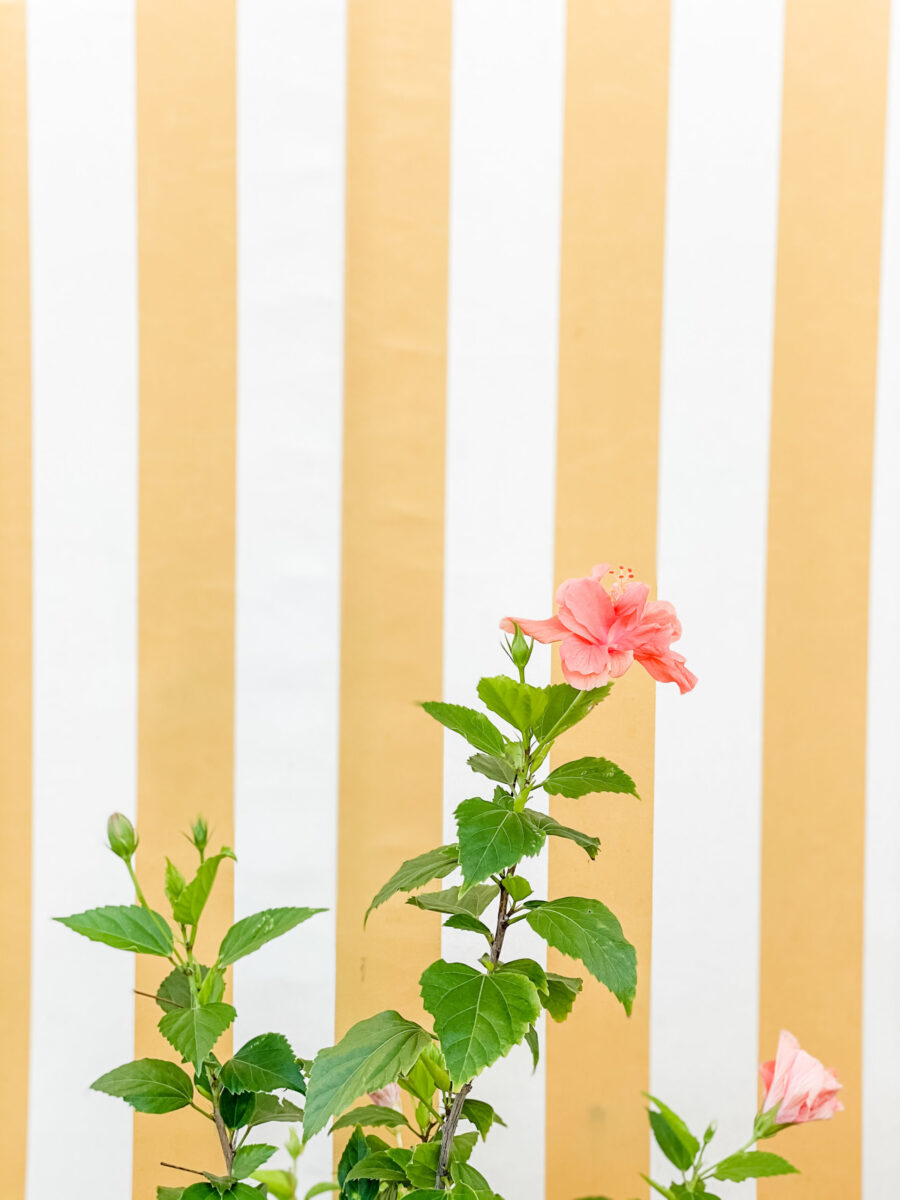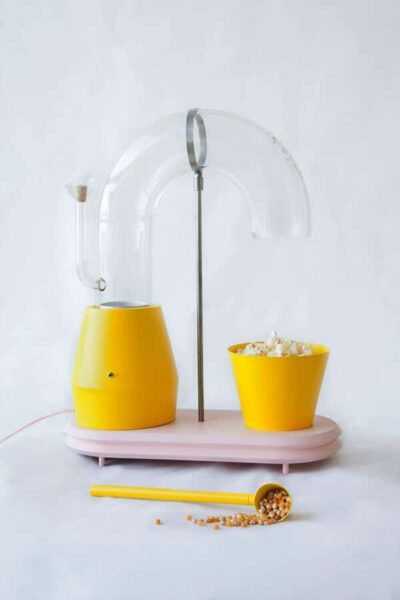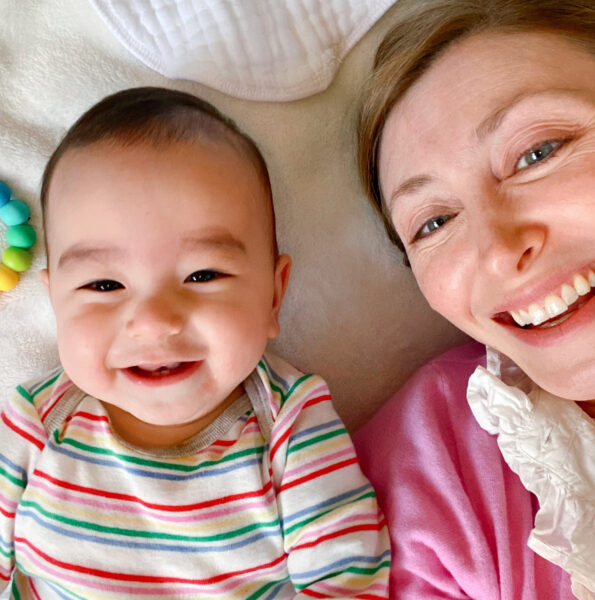6 Questions to Find Your Joy and Feel It More Deeply

A common misconception about joy is that it’s a simplistic emotion. Joy’s associations with bright color, sunny days, and easy smiles can make it seem straightforward and uncomplicated. Western culture loves a good binary, and so if joy is light, then naturally we tend to see it as opposed to heavier emotions like melancholy or anxiety. Historically, our weightier emotions merited scientific study and intensive reflection, while our lighter emotions were presumed to take care of themselves.
It’s as if somewhere along the way, heavy became entwined with deep, while light began to seem shallow. This even applies to how we think about people who express these emotions. A person who is cheerful and joyful risks being seen as less serious than one who is brooding and pensive.
Yet if I’ve learned anything over the course of more than ten years studying joy, it’s that while joy may be simple, it’s far from simplistic. Just as a colorful flower has a web of roots extending down into the earth, joy is light, but also deep, anchoring us to the well of our most formative memories, illuminating our most essential values, guiding us to our highest purpose. And as I’ve recently explored in this space, joy is often also bound up with challenging emotions: fear, anger, guilt, and sorrow. If you’ve ever tried — and struggled — to reconnect with joy, you probably have a heightened awareness of this entanglement. To really understand and inhabit our joy, we need to go deeper.
Questions to Find Your Joy and Feel It More Deeply
So this week, I’m sharing a series of questions that you can use to find your joy, reconnect with it, and feel it more deeply. You might use these as journal or reflection prompts, bring them to a therapy session, or raise them in conversation with a trusted friend. They’re here to help you dig below the surface, so that you can unearth new pathways to finding and creating joy in your life.
These questions are drawn from our free Joyful Conversation Starters Guide, which has 36 questions to help you think, and talk, about something other than the news. You can get it right here.
What’s a game, toy, or book that brought you tremendous joy as a kid? How has its influence shown up in your life?
Joy lies close to the surface in childhood. But as we get older, we may feel pressure to let go of the things that bring us joy. Maybe you loved to draw, but you were led to believe you weren’t good at it. Or pushed to cultivate other skills that authority figures in your life considered more “important.” Maybe your taste in music or clothes was made fun of by other kids. Maybe you were pushed to focus on schoolwork, and play was seen as trivial or unimportant. Over time, you may have gotten so used to denying your joy that you lost your connection to it.
Reflecting on what brought you joy as a child can give you clues to what might bring you joy as an adult. No, you don’t need to go out and buy a Lite-Brite (though you can if you want!). But thinking about why you loved it might remind you of other hobbies or activities that might bring you joy as an adult.
When you were a child, what adult showed you what it meant to find joy in life? How did they do it?
This question helps you think about your models for joy. Was joy something that the adults in your life “grew out of” as they got older? Or did you have someone who retained their joyful spirit throughout their lives?
You may find that you have different people who showed joy to you in different ways. One of my joy role models was my neighbor, the children’s book author Jean Craighead George. Jean took great joy in many things, and you could hear it in her frequent, ringing laughter. She lived abundantly, but not wastefully. She often ventured to wild places, returning with stories of Amazonian monkeys and Arctic wolves. And she never lost her sense of awe and wonder at the natural world, and her enthusiasm for it was infectious.
My grandmother, on the other hand, was the picture of elegance and restraint. But she surrounded herself and the people she loved with beauty. She had the greenest thumb of anyone I’ve ever encountered, and transformed rooms into dreamlands with fabric and flowers. She taught me how to sew, how to refinish furniture, and how to see the joyful possibilities in something forlorn and unloved. And she also had a healthy appreciation for mischief, as long as it didn’t leave anyone with hurt feelings. She and my grandfather would take me for ice cream sundaes before dinner to “sharpen my appetite.” When I took road trips with the two of them, she sat and played games with me in the back seat.
It can be hard to imagine something if you haven’t seen it.
For example, I’ve had several people mention after reading the Play chapter in JOYFUL that their parents didn’t play with them, and they have since realized that they don’t exactly know how to be a “parent who plays.” If you didn’t have adult models for joy that resonated with you in childhood, you can find these models now. Look to your peers: who embodies joy in their work, marriage, or family life? Or you can look to famous people or even fictional characters, who can be a great source of inspiration for living with joy. I have a series of joy muses, everyone from Ina Garten to Iris Apfel, who I think about to remind me of how to bring joy to a range of difference situations.
Who are you when you are your most joyful self?
You might try describing what you feel, what changes you notice in yourself, or what someone else might notice about you.
This question asks you to attend to what accompanies the feeling of joy for you. One reason this can be valuable is that helps you recognize joy in yourself more often. Maybe you notice that you smile more, that your shoulders relax, or that you find it easier to let go of small worries. Instead of just letting those little moments slip by, being aware of these signs can help you catch the joyful moment so you can savor and prolong it.
The deeper power of this question is that it illuminates “side effects” of joy that can have powerful resonance in your life. Maybe you notice that you’re less likely to be irritable with a loved one when you’re in a state of joy. Maybe you notice that you’re more approachable to others, or that others seem to confide in you more when you’re joyful. One thing I’ve noticed is that when I’m my most joyful self, I tend to be less self-conscious and more generous. These are two attributes I value, yet sometimes struggle with. So knowing that joy can unlock these qualities reminds me that joy isn’t just an idle pursuit, but can help me feel more aligned with my aspirations.
When was a time in life when you struggled, but changed and ultimately found more joy in life as a result?
This question helps to build your personal narrative around joy and resilience. It offers a reminder that joy is dynamic, and often comes from places we don’t expect. Maybe you went through an unexpected breakup that was painful at the time, but with hindsight can see that had that not happened, you never would’ve moved to a new city, one that brings you joy every day. Maybe didn’t get your dream job, and while this was devastating at first, it freed you to start your own business. (Many entrepreneurs have this kind of struggle as part of their story: Oh Joy’s Joy Cho, for example, talks about how she didn’t get her dream job at Anthropologie, and her incredibly successful blog and design business emerged in the wake of that disappointment.)
For me, the long and painful journey of infertility forced me to change my relationship to my body. I had long pushed through whatever obstacles I encountered and expected my body to come along for the ride. But this was one obstacle I couldn’t push through. I used this as a time to cultivate a gentler, more connected relationship with my body. I have no way of knowing if this made the difference in eventually overcoming infertility, but I do know that it led to a radically different (and more joyful!) pregnancy than I would’ve had otherwise, and continues to influence my life as a mom.
Our greatest struggles often open up new spaces in us for joy, and they help us appreciate joy when it finally arrives. Knowing that we have weathered trials before can help us let go of our original plan and get curious about the opportunity for growth in the struggle, and be patient as we wait for joy to come back again.
How do you think joy will be similar or different for you when you’re 80, compared to how it is now?
It’s so easy to get bogged down in the day-to-day, and this question helps you check in with the long view. Whenever I ask myself this question, I find that it’s not so much that my idea of joy has changed — I still imagine I’ll find joy in family and friends, art, nature, gardening, books, being active, and writing — but that where I’m currently putting my time doesn’t necessarily line up with that vision.
If art is something that is both joyful to me now and I believe will still be joyful when I’m 80, then it’s notable that I don’t make more time to paint. If books are a consistent source of joy, then why do I let myself scroll my phone for an hour before bed instead of using that time to dive into a book? And if being active will be important to me, then taking care of my body now through diet and exercise is important, maybe more important than answering those last emails in my inbox. And knowing that nature will always be important to me, I’m reminded that being more active in the fight against climate change will be vital to helping protect against habitat destruction and species loss that may impoverish our wild places in the decades to come.
These answers are a reminder that, as Annie Dillard writes,
“How we spend our days is, of course, how we spend our lives. What we do with this hour, and that one, is what we are doing. A schedule defends from chaos and whim. It is a net for catching days.” When we zoom out and look at the big picture, we can create greater alignment between our aspirations for life and our activities, so that when we reach the end of our lives, we’re less likely to have regrets.
On the other hand, some things may be different about your picture of joy at 80. I suspect that travel will matter less to me, and home will matter more. This reminds me that taking time for vacations and adventure now (post-pandemic) is important, and to prioritize this in my life.
If you decided joy were going to be a priority in your life, what changes might you make in the coming year?
The starting point for this question is understanding what a joyful life looks like for you. How close are you to this life, and to what extent do you allow joy to be a driver when crafting your priorities?
The year after I finished writing JOYFUL, I decided that I wanted to focus more on finding joy in my daily life. Writing a book had been a wonderful, transformative experience, but it also involved many hours of sitting still at a desk, and I knew I needed to replenish my own well. At the beginning of the year, when I sat down to write my goals, I included “Have fun!” among them. I wasn’t quite sure what that would look like, but I knew it was going to be a filter for my decision-making throughout the year, a reminder to let loose a little.
Some of the things that I did as a result?
I started reading purely for fun again.
While writing the book, I had so much research to do that I mostly read non-fiction, even on weekends or vacations. So I went down to Books are Magic, my favorite local bookshop, and told the woman working there that I wanted fun books! She gave me a stack of recommendations from humor to light-hearted fiction that made me fall back in love with reading.
I set a joy budget.
I looked at my spending and decided that I could trim enough from my budget to use the remainder in an intentional way for joy. This paved the way for what came next…
I bought a kayak. (A hot pink one!)
When Albert decided he wanted to spend more time out on the water, I jumped right in with him. Having our own boats meant that being on the water wasn’t something we needed to plan. We could just pop them on the roof rack whenever it was a nice day, and we’ve since enjoyed some extraordinary days together out steeped in nature. Yes, it felt like an extravagance, but had I spent the money on smaller things I wouldn’t have questioned it, yet it would’ve brought me much less joy.
I committed to taking a real vacation.
I set an auto-responder, turned off my email, deleted the Twitter app from my phone, and took my first real, off-the-grid vacation in more than two years.
When we make joy a priority, it gives us a lens to reexamine how we’re spending our time, our money, and our energy. This question helps you get concrete about aligning your life to joy, and making it happen in your day-to-day.
If you found these prompts helpful, you can find more in the Joyful Conversation Starters Guide, which you can download for free below. And if these questions lead you to any new revelations about your relationship with joy, I hope you’ll share what you’ve discovered in the comments.




Discussion (5 Comments)
Since I am presently 74 years old, I did have to laugh —very joyfully—at the question about joy when I am 80!
Great Post – sometimes we know things but we need someone who put in writing our thoughts… Thanks Ingrid, I look forward to the next post! Monica
Thanks Ingrid for the post and your thoughts. My mother inspired joy in me all my childhood and continues to this day, just by being her happy, loving self: a true friend to me. Mum ended up finding and living true joy after a period of great struggle when she tragically lost her father and brother at the tender age of 17. She then found joy in acting in theatre shows, working in jobs that she loved, then marrying and having a family. She has taught me about finding and drawing from your inner strength: I feel this is a step on the pathway to joy. Some things I do lately that bring me joy: evening walks around my neighbourhood after dinner, sewing myself tops and shirts in fabric and colours that work for me; I have joined a local drumming group (west African djembes) and unwaveringly prioritising self-care like early nights, reading in bed, and using a lovely new shampoo. Oh, and another thing: I donated to a charity that I know which was fundraising due to the pandemic: it felt fantastic to give!
Thank you for this thoughtful post. I would suggest that YOU are a joy muse for many of us!
Loved these questions – right away I had the thought that reading your blog is one way I invest my time to produce joy in my life! Thank you!
Kristen, www.homewellnessconsulting.com